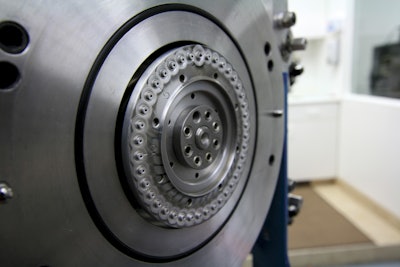
By Jasmine Garside, Global Operations Manager, Beta Analytic Inc., Miami, Florida, USA
The U.S. Food and Drug Administration (FDA) recently held an open comment period on the definition and implications of the term “natural” that garnered more than 7,500 responses, evidence that natural products are a hot topic among regulators and consumers alike1.
Increasing consumer demand for naturally-sourced flavor and fragrances gives industry stakeholders greater impetus to verify that ingredients do indeed originate from nature and are not adulterated with synthetic imitations. In highly regulated marketplaces where mislabeling could have legal and commercial repercussions, a reliable natural source test is critical at the procurement, research and development, product launch and supply stages.
Biobased carbon testing standardized as ISO 16620-22 is an ideal analytical tool for producers in the industry who are presented with the challenge of demonstrating or verifying the natural source of flavor and fragrances.
Understanding Natural Source Testing using the Carbon-14 Method
Biobased carbon testing is based on the principles of Carbon-14 (C14) dating and long-established technology that has been employed for decades in areas such as archaeology, hydrology, earth and climate sciences. Biobased testing is also an internationally-renowned analytical tool in the biobased, biofuels and waste-to-energy and food and flavors sectors. The application of C14 testing to differentiate natural from synthetically derived flavors3 and identify adulterated flavors4 has long been recognized.
The Food Chemicals Codex (FCC) has also approved biobased content testing based on C14 methodology for verifying the authenticity of food additives in the past5.
Biobased testing measures the fraction that is derived from recently living feedstocks such as plant material (the biobased fraction). The test does not differentiate between the different ingredients contained but indicates the natural or synthetic origin of the carbon.
Given that natural extracts products are derived from plant materials and artificial flavors are manufactured using molecules from fossil or mineral sources such as petroleum, the percentage of biobased carbon in a sample indicates the fraction of a product such as a flavoring additive that is derived from natural sources [1].
Simply put, the method involves measuring the C14 in a given standard and comparing against a modern standard reference. Recently living carbon-based materials, such as plants have a known C14 level and will yield a biobased result of 100%.
Materials derived from fossil feedstock such as petroleum, however, will not contain C14 because the isotope is subject to the laws of radioactive decay and disappears completely within 50,000 years. A petroleum product will therefore be 0% biobased.
For a blended product that is composed of a natural extract and a synthetic chemical compound, the test will yield a biobased carbon result between 0% and 100% proportional to the quantity of each of the two components in the blend.
Authenticity Testing Using ISO 16620-2
ISO 16620-2 is an international standardized method for determining biobased content of solid, liquid and gaseous samples using C14 analysis that can be applied to the flavors and fragrances industry. An ISO 16620-2 analytical report for a flavor or fragrance sample would show the percentage of biobased carbon as a fraction of total carbon in a material submitted for analysis. Accelerator Mass Spectrometry, referred to as Method C in the standard, is the most advanced technology capable of obtaining high-precision results from samples as small as 1 mg.
According to Mr. Darden Hood, President of Beta Analytic and technical advisor to ASTM, CEN and ISO standardization initiatives for biobased content testing, the use of radiocarbon dating to establish natural versus synthetic origin of consumer products is not new. It has been well established for decades as a useful and accurate tool. However, the outdated terms of dpm/g (disintegrations per minute per gram) or even radiocarbon age are now replaced with clearly understandable terminology that is easily marketed and understood by both regulators and consumers. The term “% biobased carbon” has become universal in a world in which we are constantly striving to use sustainable alternatives to petroleum.
1 http://www.perfumerflavorist.com/flavor/regulatory/Look-Whos-Talkin-About-Natural-FDA-Ends-Comments-379386091.html
2 http://www.iso.org/iso/home/store/catalogue_tc/catalogue_detail.htm?csnumber=63767
3 Campi, E., Mentasti, E., Volpe, P., 1982: Radiocarbon evaluation of natural/synthetic ratio in citric acid samples, Analytica Chimica Acta; available for purchase at: http://www.sciencedirect.com/science/article/pii/S0003267001953395
4 Krueger D.A., 1987: Determination of adulterated natural bitter almond oil by carbon isotopes. Journal Of The Association Of Official Analytical Chemists: 175-176; available for purchase at: http://eurekamag.com/research/005/120/005120914.php
5 Compendial Approvals for FCC Seventh Edition Third Supplement, available for consultation at: http://www.usp.org/sites/default/files/usp_pdf/EN/fcc/fcc_7_3s_revisions_07-jul-2011.pdf












